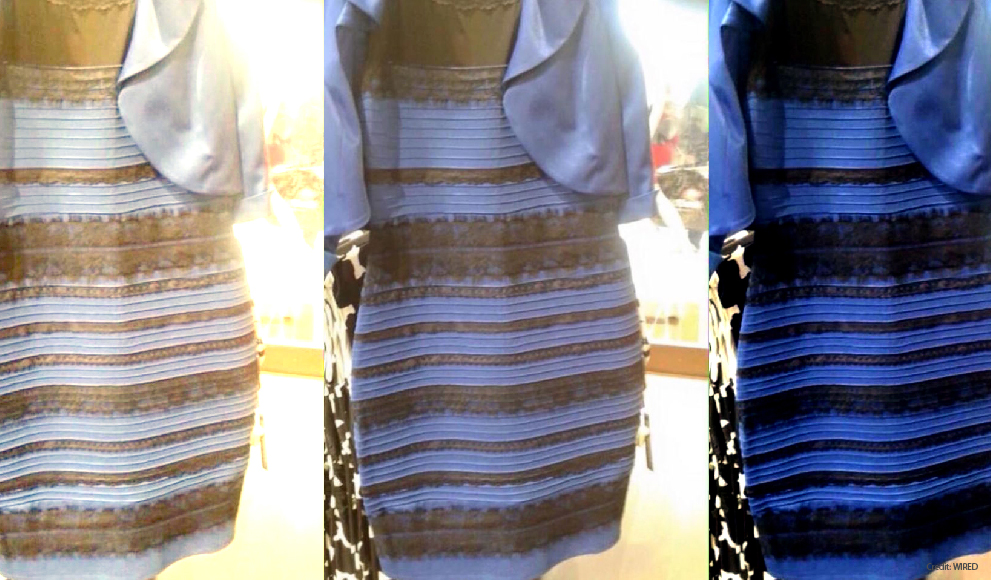Wellesley Neuroscientist Provides Insight to WIRED and The Guardian on Color and Neural Perception

Black and blue, or gold and white? This is the question many are puzzling over this week on social media as an image of one dress which appears to be a different color, depending on the viewer, went viral. Wellesley neuroscientist Bevil Conway explained the color phenomenon for WIRED and the Guardian, among others, this week.
The dress began as a Tumblr post which quickly spread through the Internet as users passionately disagreed over the color of the dress. “This fight is about more than just social media,” wrote blogger Adam Rodgers about the color controversy in The Science of Why No One Agrees on the Color of This Dress. “... It’s about primal biology and the way human eyes and brains have evolved to see color in a sunlit world.”
Rodgers talked to Conway, associate professor of neuroscience and expert on the neural basis of color, about what he sees when he looks at the dress. “What’s happening here is your visual system is looking at this thing, and you’re trying to discount the chromatic bias of the daylight axis… So people either discount the blue side, in which case they end up seeing white and gold, or discount the gold side, in which case they end up with blue and black.”
In an op-ed for British newspaper The Guardian, Conway analyzed the phenomenon and the human obsession with color. "We are always fascinated by optical illusions, by the tricks that the visual system plays with our perception, and this reminds us that for most of the time we unflinchingly rely on visual cues to navigate our world," he wrote. "... Colour seems to have direct access to our emotions. Yet the way the brain calculates colour isn’t governed by simple rules: what looks like one colour to you can appear as a very different colour to me. It is this combination of factors – the emotional power of colour coupled with the inherent mystery in how colour is determined by the brain – that sparks our collective obsession with the colour of that dress."
A member of Wellesley's interdisciplinary neuroscience program, Conway is both a visual neuroscientist and visual artist. His interests are focused on mechanisms underlying perception, cognition, and behavior, which he addresses by exploring the neural basis of color. One long-term goal of his research program is an understanding of the neural processes by which color influences emotional states.
